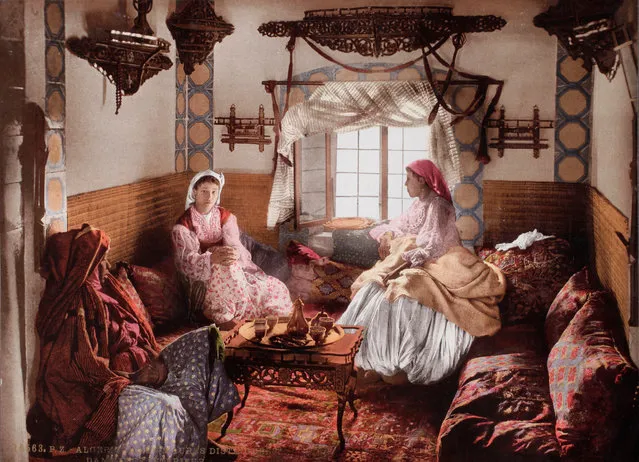
Photochromes are vibrant and nuanced prints hand-coloured from black-and-white negatives. Created using a process pioneered in the 1880s, these images offer a fascinating insight into the world when colour photography was still in its infancy. A Tour of the World in Photochromes is at the Swiss Camera Museum, Vevey, until 21 August. Here: Women in Algeria, 1899. (Photo by Swiss Camera Museum/The Guardian)
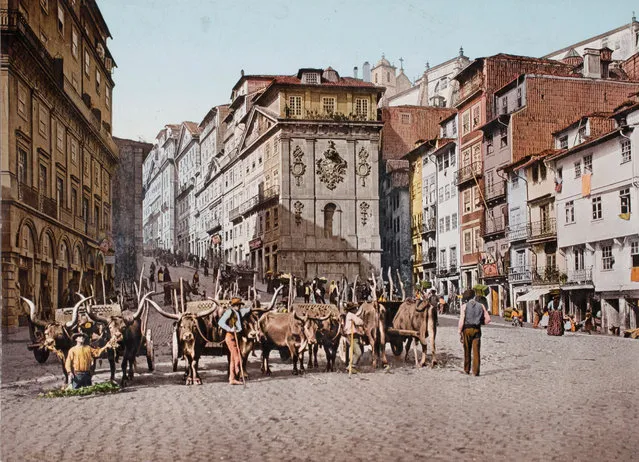
The process was developed in the 1880s by the Swiss chemist Hans Jakob Schmid. Here: The Praça da Ribeira in Porto, Portugal. Circa 1903. (Photo by Swiss Camera Museum/The Guardian)
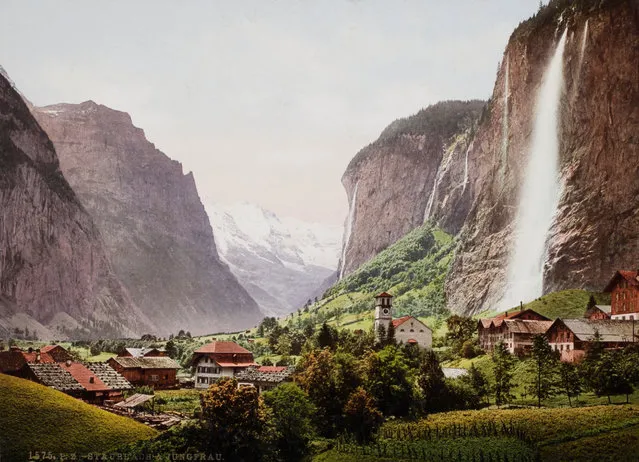
Creating a photochrome involved taking detailed notes on the colours present in the photographed scene, and then hand-colouring the negative. Here: Lauterbrunnen and the Staubbach waterfall, Switzerland. Circa 1900. (Photo by Swiss Camera Museum/The Guardian)
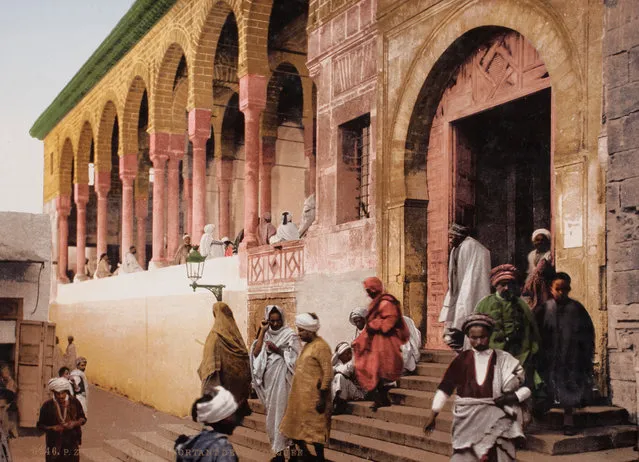
Limestone tablets were coated with a light-sensitive substance before a reversed negative was pressed against it, and then exposed to daylight. Here: Mosque of El-Zituna in Tunis, Tunisia, 1896. (Photo by Swiss Camera Museum/The Guardian)
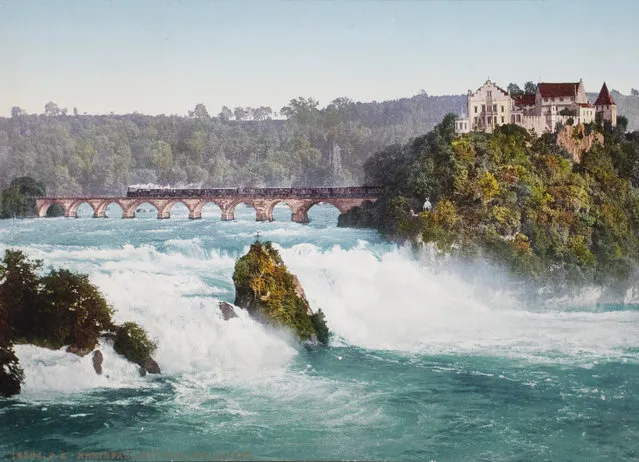
The image on the negative meant that different amounts of light fell on different areas of the coating, which then hardened according to the amount of light to which it had been exposed. Here: The Rhine Falls, Switzerland. Circa 1890. (Photo by Swiss Camera Museum/The Guardian)
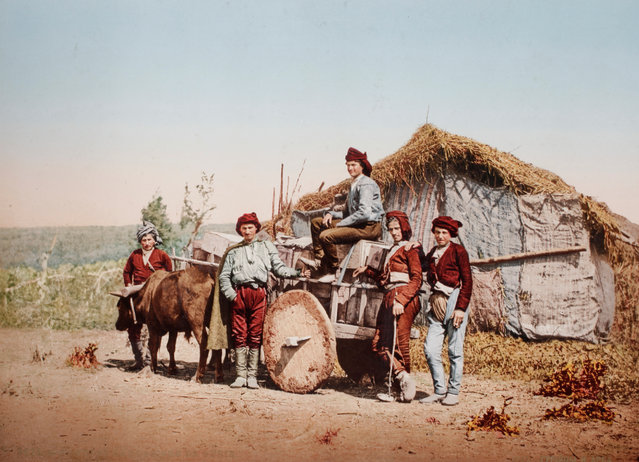
A solvent was used to remove the unhardened bits of coating, leaving the image of the negative imprinted on the stone from which it was printed. Here: Farmers in Guria, Georgia, 1904. (Photo by Swiss Camera Museum/The Guardian)

This process was then repeated using different colours, each applied using a different stone. Here: Landing off the coast of Algiers, Algeria, 1896. (Photo by Swiss Camera Museum/The Guardian)
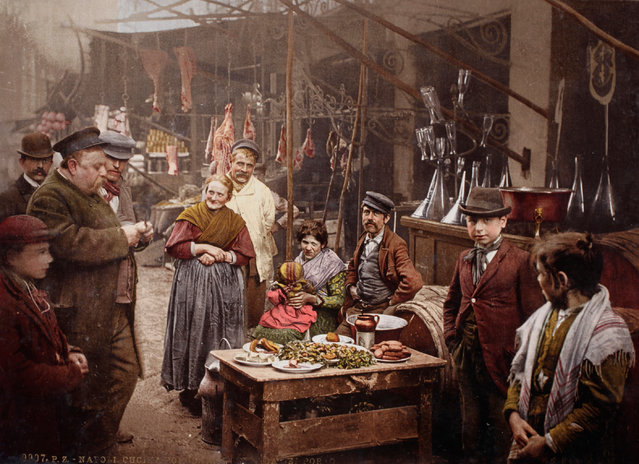
The finished photochromes were produced using at least six different tint stones, although many more were often used. Here: Street food in the Strada del Porto in Naples, Italy, 1899. (Photo by Swiss Camera Museum/The Guardian)
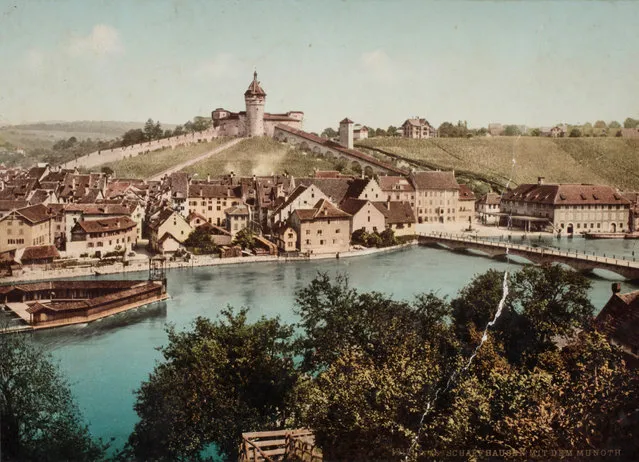
The company Schmid worked for patented the process, and founded a company, Photoglob Zurich, specifically to market the prints. Here: Schaffhausen and the Munot, Switzerland, 1893. (Photo by Swiss Camera Museum/The Guardian)

Photochromes soon became wildly popular and enjoyed global success, especially as postcards. Here: Camel drivers in the desert, 1895. (Photo by Swiss Camera Museum/The Guardian)
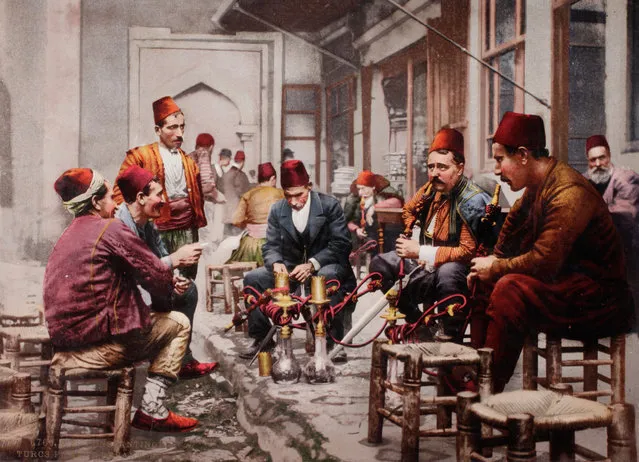
However, the first world war and the development of commercially viable colour photography largely ended photochrome’s reign. Here: Water-pipe smokers in front of a coffee house in Istanbul, Turkey, 1897. (Photo by Swiss Camera Museum/The Guardian)
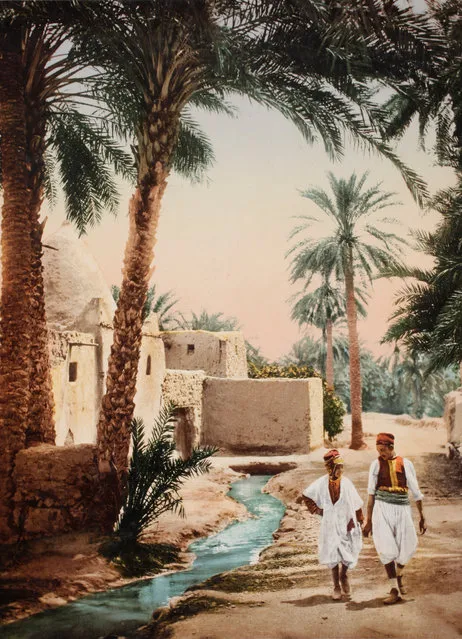
Today, however, they remain extremely popular with collectors, and more than 500 of them are on display in this exhibition. Here: Alley in the old town of Biskra, Algeria. Circa 1900. (Photo by Swiss Camera Museum/The Guardian)
07 Jul 2016 10:56:00,
post received
0 comments
